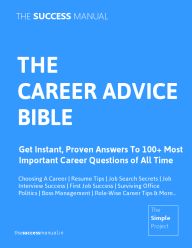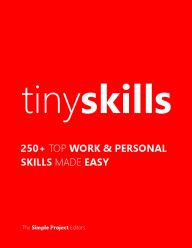On February 16, 2025 By thesuccessmanual Topic: Remarkable, Quotes, Mba
This guide belongs to 100 Ways To Be Being Remarkable Series, a special project that brings you business and self-development advice from The Success Manual.
Rule #1: Stop Talking!
- Linda Eve Diamond
"When you ASSUME you make an ASS out of U and Me."
- Anon.
To listen is to understand. How to express understandingYou can do this by:
1. Reflecting back feelings
“It seems you are feeling.....”; “It sounds to me as if .........”; “You must be really.......(angry, pleased, worried etc.)”
2. Paraphrasing
You repeat back to the person what they have said in your own words. Paraphrase the context (and the content) of their communication, not their emotion.
‘Key word repetition’ is another effective form of paraphrasing. When you are really listening, it is easy to pick out particular words or phrases to encourage the speaker to explain in more detail.
If the speaker is trying to develop a theme, help them by adding constructively to what the have said. Say,
“How do you mean?”
“What makes you say that?”
“What are you thinking of specifically?”
“Tell me more.”
3. Summarizing
When you summarize what someone has said, you again convey the extent of your active listening.
Condense the information into brief points or themes and focus rambling remarks into crisp phrases. You can introduce the paraphrase or summary with something like:
“As I understand it...”
“If I’ve got it right.....”
“So what you are saying is.....”
And, nod often.
"Nemo surdior est quam is qui non audiet." ("No man is more deaf than he who will not hear.")
- Anon.
ACTIVE LISTENING
It is used in many management and sales- training programs. A salesperson applying active listening, for example, reacts non- judgmentally to what a prospect is saying; rephrasing it to make sure she/he truly understands the customer’s point of view. The customer says something and you say it again. Then rephrase it. There are 2 benefits of this:
- The process minimizes the likelihood that the salesperson is laying his biases on the customer’s needs.
- The prospect was listened to and understood.
A MEMORY AID FOR OPEN QUESTIONING
WhoWhatWhereWhenWhyHow
"He who asks is a fool for five minutes, but he who does not ask is a fool for ever."
- Chinese proverb
ELEVEN ACTIVE LISTENING SKILLS
1. Acknowledge to the speaker that you are actually hearing.
2. Restating what the speaker just said.
3. Pick up on the body language and emotions of the speaker, and reflect them back at her you are affirming that you have reached the same understanding.
4. Interpreting
Like a psychiatrist. “I see from your uncontrollable twitch that this has upset you. Tell me why…” This is generally focused on being empathetic, and encouraging people to talk more.
Ask for clarifications, to make sure you understand what your speaker means. “Are you saying you need ‘drag and drop’ because you need an easy to use interface, or because people will be using a tablet pc with no keyboard”?
5. Summarizing
When you ask a good open ended question, you will get a relatively long response. When applying active listening skills to requirements gathering, you often want to let your speaker go off-topic a little bit, as it helps identify other requirements.
Make notes of those other topics for follow-up, then summarize the parts of the answer that addressed your initial question. You’re reinforcing for the speaker that you understood why they said what they said, and that you didn’t muddy the waters with the other information they gave you.
6. Probing
People often summarize in order to communicate effectively. Developers will use design patterns to allow them to describe detailed software implementations in a word or two. People in general will use symbols as replacements for compound ideas.
Ask a clarifying question or two to assure the speaker (and yourself) that you understood what they intended you to understand. This can also help you with credibility with the speaker, as it demonstrates some knowledge of or comfort in their domain.
7. Giving Feedback
By sharing your opinions about particular ideas, you create a collaborative bond with the speaker. You should focus on affirmation of their insights or ideas, instead of criticisms. If you tell someone that their question is stupid, you encourage them to shut down and shut up.
Listen to speakers or panelists in a Q&A session - they regularly start their answer with “That’s a great question.” The really good ones will say “That’s a great question, because…” Without the because, the feedback can start to sound like a pre-programmed platitude. Quickly snap off half a dozen “Great Question. Here’s my answer.” answers without the rationalization, and people will tune it out as noise. If you’re struggling for responses, use anecdotes. “That’s a great question, I had a client who never asked it - and here’s how the disaster unfolded…”
8. Supporting
By supporting the speakers’ worries as being valid, and ultimately resolving those worries, you create loyal customers. If they add their voices to the mix, providing support for the ideas that people present, they will get more and better ideas.
If they follow-up, they can demonstrate a clear cause-and-effect for their customers. “You said it. We did it.” That would generate some loyalty!
9. Checking Perceptions
When you’re actively listening to someone, in addition to getting data, you are forming impressions and perceptions. You need to check the validity of those perceptions with the speaker.
When gathering requirements, this often leads to identification of the true requirements, and even implicit requirements. You’re also letting the speaker know that you “get it.” This is a great opportunity to double up on the supporting and feedback active listening skills with responses like “I think that is a great requirement, because it will prevent incorrect orders from being shipped, and that will reduce field-servicing costs. Or was there a different benefit you had in mind?”
10. Being Quiet
Interviewers use this technique all the time. Silence can make people uncomfortable, so they tend to fill the void - the only way they can, by talking more. While this is effective for confrontational interviews, there are more positive and enabling reason to do be quite.
First, you need to temper your exuberance to provide feedback, support and summaries, so that you appear to be listening and not talking. You’re meeting with someone so that you can understand their perspective - not so that they can understand yours. Second, you want to give people time to think.
If you are creating a “take all the time you need,” positive, supporting silence, they will use that time effectively. The attends and emotional affirmations you’re providing are what make it supporting and not interrogative.
11. Extension
This is a variation on the restating technique. Many people you interview will be providing you with data from a discrete perspective. When gathering requirements, you have to find a way to abstract that information into market requirements.
People also often talk in terms of their existing tools and processes. You may be getting great information, but it may be overwhelmed in implementation details, either about how they do their job, or how they envision the future system to be.
A great way to validate that you’re generalizing the salient parts of their ideas is to extend the ideas. “I need to be able to sort the accounts receivable list by name, even though Joan sorts them by outstanding amount” can be combined with other requirements and extended to “Each user shall be able to organize outputs by field in the UI.” And you just discovered that Joan is a stakeholder who uses the same functionality for a completely different purpose.
Also Read
How to be a great communicator
The Networker's Bible: 75+ tips on connecting and influencing people
How To Talk Well and Impress Everyone
How to be remarkable #51: Be a great public speaker
Body Language simple, very simple
If you liked this article, please bookmark it on Delicious or share on Twitter. Thanks, friends. Follow us on Twitter.
We don't recommend any other guide than our very own The Success Manual - Encyclopedia of advice to 130 most important skills.

